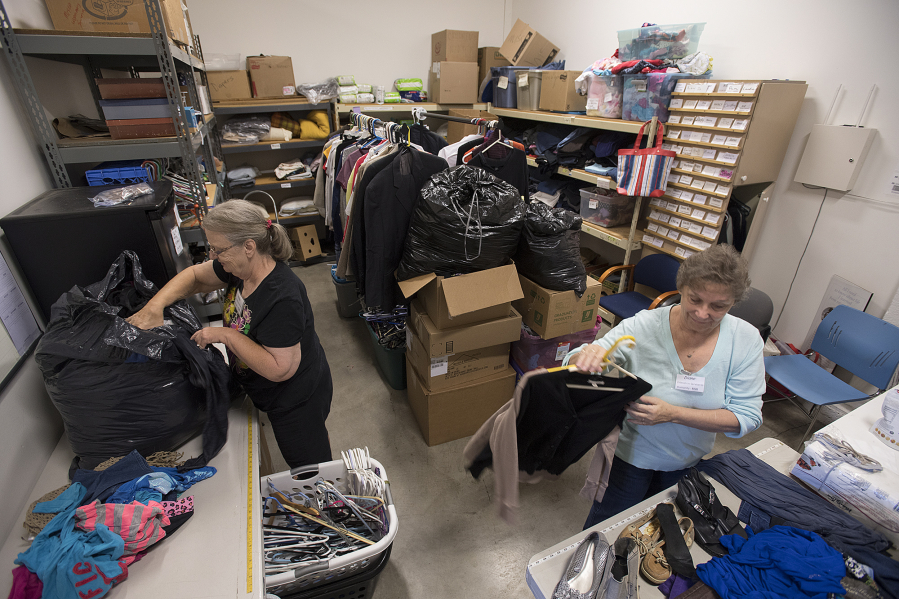Residents of the metropolitan area that includes Vancouver and Portland donated less of their income to charity than the rest of the country in 2015, according to an analysis of itemized charitable deductions.
The Chronicle of Philanthropy’s How America Gives, an analysis of 2015 itemized tax deductions for people earning at least $50,000 released Tuesday, said residents of the Portland-Vancouver-Hillsboro, Ore., metro area donated $3.5 billion to charity in 2015.
For those taxpayers who itemized, that averages out to 2.6 percent of their total income. The nationwide average was 3.5 percent.
The lower numbers — an average charitable giving of $4,169 per itemizer in the Vancouver-Portland metro area — does not necessarily indicate that residents are stingier, observers say.
Generally, people are more likely to itemize deductions as their incomes increase, according to The Chronicle, a publication for grantmakers and fundraisers.
People are less likely to itemize deductions in states with no income tax, like Washington, which may hide the true level of charitable activity. Moreover, taxpayers in general have taken fewer deductions over the last decade. The Chronicle said tax reform could result in even fewer people itemizing deductions.
Jeanne Kojis, executive director of the Nonprofit Network Southwest Washington, wonders how many people actually keep receipts of all their charitable giving to use later for taxes.
“Maybe people are not as conscientious about saving every piece of paper,” she said.
Room for growth
Maury Harris, of the Community Foundation for Southwest Washington, pointed out that the most giving areas on this list — in terms of a larger percentage of income being donated — are also particularly religious. Provo and Logan, Utah, top The Chronicle’s list of 381 areas. The vast majority of people there are members of the Church of Jesus Christ of Latter-day Saints, which emphasizes tithing.
Religion is where people most often put their charitable dollars, accounting for about one-third of contributions, according to Giving USA. The next most common areas are education (15 percent), human services (12 percent) and gifts to foundations (10 percent).
The Portland metro area does not have such a high concentration of Mormons, or of church-going people in general.
Still, regardless of where Portland stacks up against more religious areas, there’s always room for improvement.
“We believe there is more potential for philanthropy in this region,” Harris said. “I think it’s just a matter of growing the amount of individuals who are involved in giving.”
That’s the basic premise behind Give More 24!, an annual day of giving hosted by the Community Foundation. More than $1 million was recently raised by 3,422 people for local charities during this year’s event. People could donate as little as $10 to different causes throughout the day, encouraging the philosophy that small gifts can add up to a lot when lots of people donate to a cause.
Friends in Service to Humanity Westside Food Pantry of Vancouver, otherwise known as FISH, was one of the most successful nonprofits during Give More 24!, banking $28,712 through a combination of individual and matching donations.
“We were really pleased,” said Katlin Smith, board president of the food pantry on Vancouver’s west edge. “We don’t have fundraising staff. We worked really hard as volunteers to get the word out.”
FISH will use the money toward general operations, food and utilities. The nonprofit aims to someday get enough money to be open for longer hours and make part-time operations manager Wendy Bukoski a full-time employee.
Chasing dollars
The Chronicle of Philanthropy said that 24 percent of taxpayers reported on their tax returns that they made a charitable gift in 2015, a figure that a decade prior typically reached 30 or 31 percent. What’s more, three-quarters of all itemized deductions were from taxpayers who earned at least $100,000. Most charitable giving is done by the wealthy.
Kojis said that could be reflective of the economy. During a prior study of America’s giving habits, The Chronicle of Philanthropy found that giving had declined 6.7 percent between 2006 and 2012. Since then, the Vancouver-Portland metro areas’s generosity has stayed about the same. Middle-class families may be unsure of their economic future and wary of donating to charities.
Also, Kojis said, in the last decade or so fundraising consultants have shifted their focus to major donors and aren’t courting middle-class donors as much.
Janie Spurgeon, vice president of development at the Community Foundation, said focusing on major gifts and estate gifts is not a bad strategy, but the healthiest nonprofits diversify revenue. That way if there’s funding turmoil from one source they can better weather it, though some groups, particularly small nonprofits, struggle with their capacity to make that happen.
What’s more, giving is changing with the times. With everyone being connected online, many causes vie for people’s attention and dollars. Those potential donors like to know exactly how their money will be spent. The Community Foundation advised nonprofits participating in Give More 24! to raise money for specific, tangible needs.
“Today’s donors really need transparency and inclusion and a clear understanding of the impact their gift is having,” Spurgeon said.




